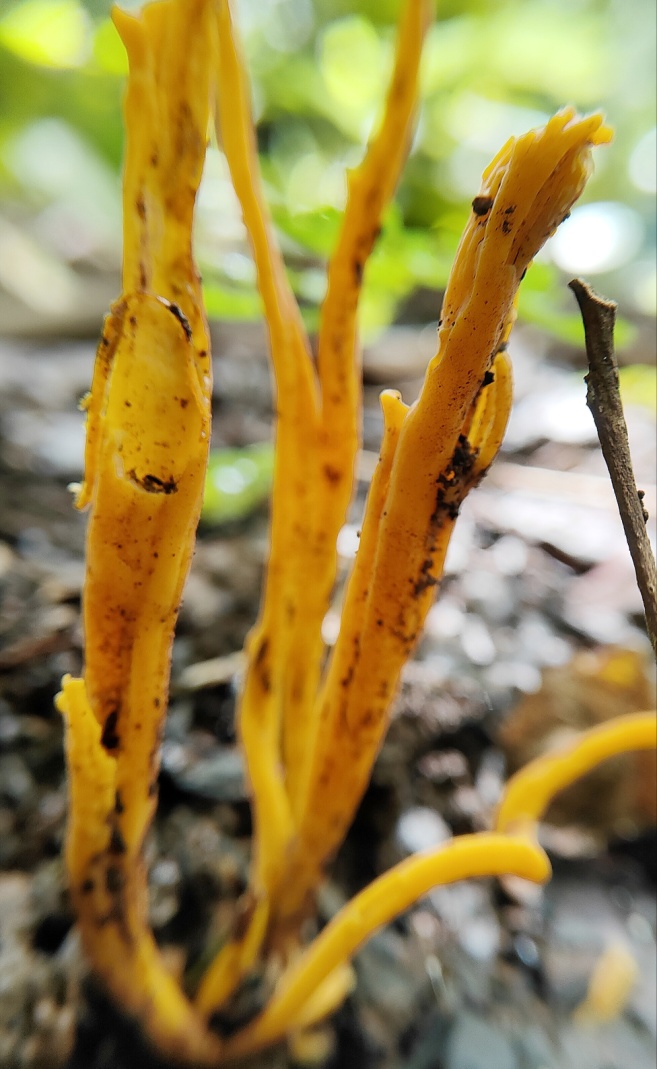Fruiting body small to medium. Basidiomata 5-12 x 0.5-1 cm in diam., cylindrical, unbranched, often flattening, grooved, with blunt apex, pale to dark yellow, fading with age, whitish towards extreme base. Basidiospores 5.7-6.8×4.6-7.5µm, sub-globose to sub-ellipsoid, hyaline, inamyloid, thin-walled. Basidia 40-53×6-7.3µm, clavate to sub-clavate, thin-walled, hyaline, with 4 sterigmata. Hyphal system monomitic, having septate generative hyphae, 2.4-4.5µm in diam. Clamp connections present in all hyphae.
Specimens examined
India, Maharashtra, Kolhapur, Panhala, Padasali (16°41ʹ24ʺN-73°51ʹ22ʺE), on soil, in cluster, 04.08.2022, Bornak, S.I. (Y22V6C3); Bhudargad, Patgaon, (16°07ʹ52ʺN-73°57ʹ24ʺE), on soil, in cluster, 18.09.2022, Bornak, S.I. and Patil, A. R. (Y22V10C5).
Remarks
The present species Clavulinopsis fusiformis matches with the description of Acharya (2017). Bright yellow and heavily fasciculated fruit body; ellipsoid to subglobose, one to multiguttulate, slightly thick-walled basidiospores with well-developed apiculus; clamp connection at basidia base; and clamped, monomitic hyphal system are characteristics of C. fusiformis (Acharya, 2017). Similar species is Clavaria amoena but, it differs in having very short apiculus. Previous records of this species are from Mussoorie, Uttarakhand and Himachal Pradesh (Verma and Pandro, 2018). This is the first report from Maharashtra state.
References:
Acharya K., Sikder, R. and Dutta, A. K. (2017). Physiochemical characterization and antioxidant activity of methanol extract from an edible mushroom Agrocybe pediades. International Journal of ChemTech Research, 10(3): 204-211.
Verma, R.K. and Pandro, V. (2018). Diversity and Distribution of Clavarioid Fungi in India, Three Fungi from Central India. Int.J.Curr.Microbiol.App.Sci 7(12): 2129-2147




